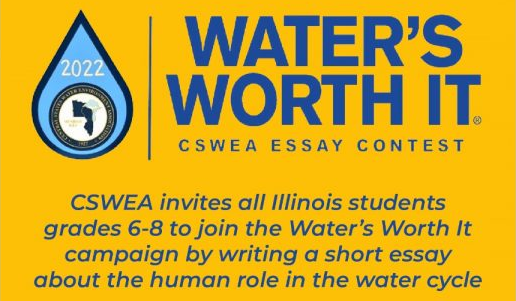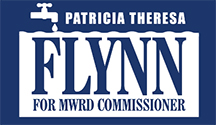Keeping Cook County’s Water Clean
As a MWRD Commissioner, Patricia Theresa Flynn’s priority will be safeguarding the quality of the water available to residents and businesses of Cook County, and ensuring the public’s confidence in the county’s water reclamation process.
But what does that process entail? Flynn encourages you to take a look at how wastewater undergoes the necessary treatments that enable it to make a safe return to the environment, and back into our homes. 
First Treatment
At the initial treatment stage, debris and other large contaminants are mechanically filtered and removed.
Wastewater passes through screens that filter out the largest material that can cause damage to the filtration machinery. It flows into tanks, where the heavier solids, like sand and other sediments, sink to the bottom. These solids are removed and washed, then deposited in a sanitary landfill.
From there, the wastewater goes into a primary settling tank. Again, remaining organic solids sink to the bottom, while fats, oils and grease settle at the top. From here, a set of rotating arms will simultaneously remove the untreated material from the bottom and skim the floating oils and fats from the surface.
Second Treatment
At this point, a large mass of micro-organisms are introduced to the water to break down the remaining organic material into forms through which the water and matter can be more easily separated.
Then the primary effluent flows through a series of aeration tanks containing bacteria and other microbes. The aeration of the water allows these organisms to flourish and grow, and to consume whatever organic matter and nutrients are left in the wastewater.
Once this process is completed, the wastewater goes into another settling tank, where the now-stabilized microbes cluster together and sink to the bottom, where they subsequently are removed. Roughly 85 percent of these microbes will be returned to the aeration tanks for the process to start all over again, and the cleaned water flows out the top of this secondary settling tank. The water at this point is clean enough to be returned to area waterways. But some of the water will undergo a third treatment process.
Third Treatment
This stage of treatment is only required when the final product must be so clean that 95 percent or better of the contaminants have to be eliminated. Treatment at this stage can include further filtration, removal of ammonia and other specific contaminants, and disinfection to prevent bacteria from causing disease in consumers.
The wastewater’s journey has taken only a few hours, but the effect within this series of tanks is equivalent to a rushing river having discharged its sediments and impurities over hundreds of miles. More than 95 percent of these impurities removed, the water can now flow back into a river or stream with no negative environmental impact, and often is cleaner than the water already in the stream. From its start to the time the water is reclaimed by nature, this wastewater process has taken less than 12 hours.










